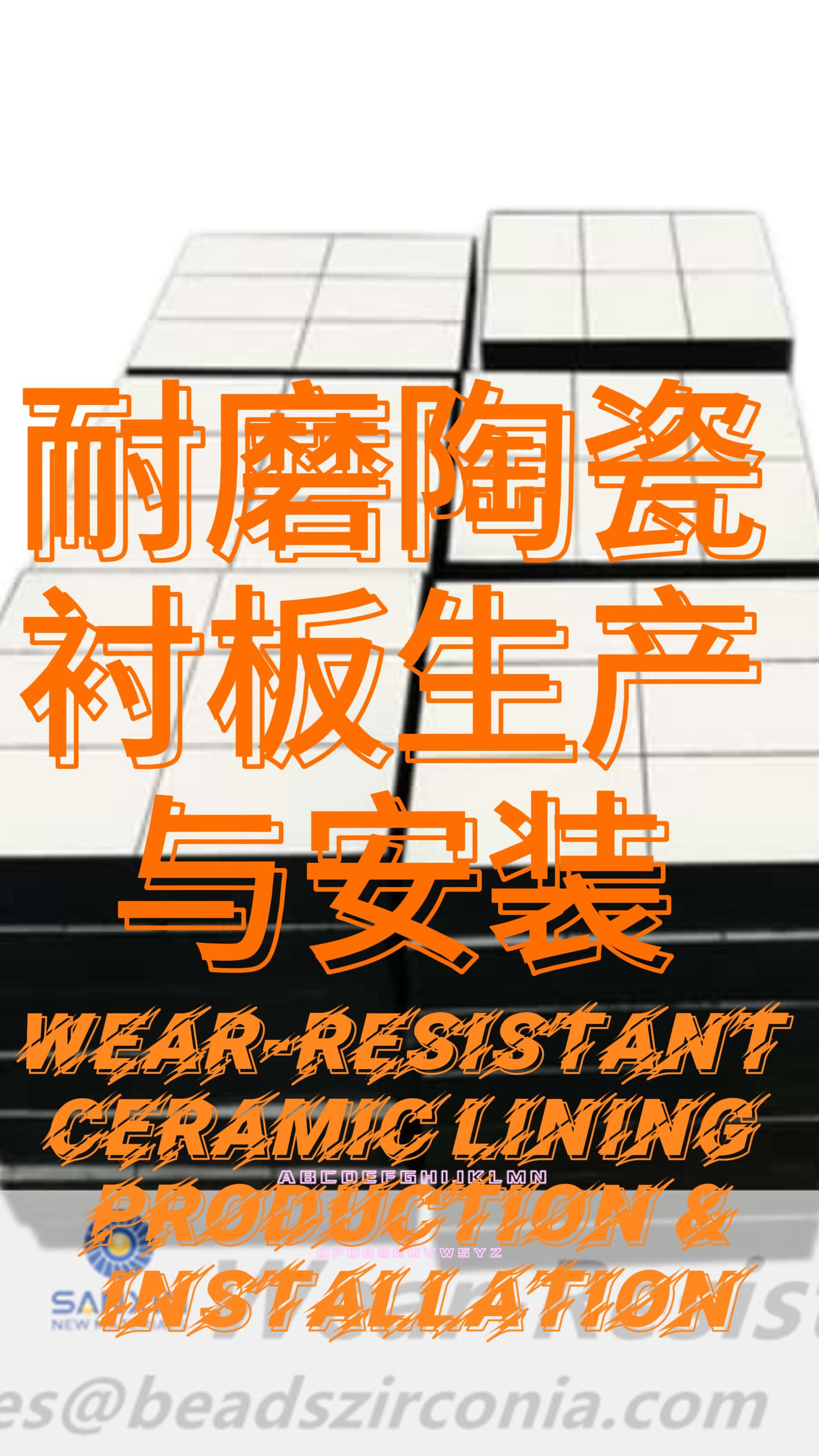In industries where abrasion and wear are major concerns, wear-resistant ceramic plates and piping have become a critical solution. These ceramic components are engineered to withstand extreme conditions, providing long-lasting protection for machinery and equipment. From mining to cement, power generation, and steel production, these components are widely used to reduce maintenance costs and downtime. In this article, we’ll explore the production process, benefits, and installation techniques of wear-resistant ceramic plates and piping.

Wear-resistant ceramics, also known as advanced ceramics or technical ceramics, are materials specifically designed to resist wear and abrasion. These materials typically contain alumina (Al2O3), silicon carbide (SiC), or zirconium dioxide (ZrO2), offering hardness and resistance to corrosive environments.
Their primary function is to act as a protective layer, preventing the deterioration of piping, chutes, and other machinery due to exposure to abrasive materials such as ores, sand, and coal. The exceptional durability of these ceramics extends the life of equipment and enhances operational efficiency.
Mining Industry: Mines require durable materials for the transport of abrasive ores. Wear-resistant ceramic piping is often used in slurry pipelines, which carry abrasive materials, helping to reduce wear and prolong equipment life.
Cement Production: Cement plants utilize ceramic plates to line hoppers, silos, and mills, where the high impact and abrasive nature of materials like limestone and clinker can cause significant wear.
Power Plants: In coal-fired power plants, ceramic piping is used in flue gas desulfurization systems and ash handling equipment to reduce wear caused by high-velocity, particulate-laden gases.
Steel Industry: Steel mills employ ceramic plates to protect critical parts, such as chutes, bins, and transfer points, from damage due to constant exposure to slag, molten metal, and other abrasive substances.
1. Enhanced Durability
One of the standout benefits of wear-resistant ceramic materials is their ability to extend the lifespan of industrial equipment. These ceramics are significantly harder than steel, which helps reduce the rate of wear on equipment handling abrasive materials.
2. Reduced Maintenance Costs
By reducing the frequency of equipment repairs and replacements, wear-resistant ceramics help to lower overall maintenance costs. With fewer breakdowns and less frequent downtime, operations can continue more smoothly, boosting productivity.
3. Improved Efficiency
Using wear-resistant ceramic materials in piping systems or equipment lining can improve the efficiency of operations by preventing clogging, leaks, or degradation. This is especially beneficial in high-impact environments, such as mining or material processing plants, where downtime can be expensive.
4. Resistance to Corrosion
In addition to resisting wear, ceramic plates and piping provide excellent corrosion resistance, which is especially important in industries where chemicals and harsh environments are present. This additional level of protection ensures that equipment functions efficiently for a longer period.
1. Raw Material Selection
The first step in manufacturing wear-resistant ceramics is selecting the appropriate raw materials. Commonly used materials include alumina, silicon carbide, and zirconia, which are chosen based on the specific requirements of the application.
2. Molding and Forming
Once the materials are selected, they are shaped using various techniques, such as pressing, casting, or extrusion. These methods depend on the size, shape, and complexity of the ceramic component being produced.
3. Firing Process
After shaping, the ceramic components are fired at high temperatures, sometimes exceeding 1500°C. This process, known as sintering, solidifies the ceramic, making it harder and more resistant to wear.
4. Quality Control and Inspection
After firing, the ceramic components undergo rigorous quality control measures to ensure they meet the necessary specifications for hardness, durability, and resistance to wear and corrosion.
1. Surface Preparation
Before installing wear-resistant ceramic plates or piping, it’s crucial to ensure that the surfaces to which they will be applied are clean and free of debris, oil, and rust. Proper surface preparation helps achieve a strong bond and ensures the longevity of the installation.
2. Bonding Methods
Wear-resistant ceramics can be installed using several bonding methods, including mechanical fastening, adhesive bonding, and welding. The choice of method depends on the application and the specific requirements of the environment.
Mechanical Fastening: Ceramic plates can be mechanically secured to surfaces using bolts or clamps. This method provides a secure attachment but may be less effective in environments where high vibration is present.
Adhesive Bonding: Epoxy adhesives are commonly used to bond ceramic plates to steel or other substrates. This method provides a strong and flexible bond, allowing for thermal expansion and contraction.
Welding: In some cases, ceramic plates are welded onto metal surfaces. This method requires specialized equipment but provides a permanent and extremely durable installation.
3. Alignment and Positioning
Proper alignment and positioning of ceramic plates and piping are critical to ensuring that the system functions as intended. Misalignment can lead to increased wear on certain areas, reducing the overall effectiveness of the installation.
4. Inspection and Testing
After installation, a thorough inspection should be conducted to ensure that the ceramic components are properly aligned and securely bonded. Testing may also be necessary to ensure that the installation will withstand the operational stresses of the specific application.
Wear-resistant ceramic plates and piping are essential components in industries dealing with highly abrasive materials. Their exceptional durability, corrosion resistance, and ability to extend the lifespan of equipment make them an invaluable investment for industries ranging from mining to power generation. By understanding the production process, benefits, and proper installation techniques, businesses can maximize the efficiency and longevity of their operations.

Submit your demand,
we will contact you ASAP.

Sanxin New Materials Co., Ltd. focus on producing and selling ceramic beads and parts such as grinding media, blasting beads, bearing ball, structure part, ceramic wear-resistant liners, Nanoparticles Nano Powder

